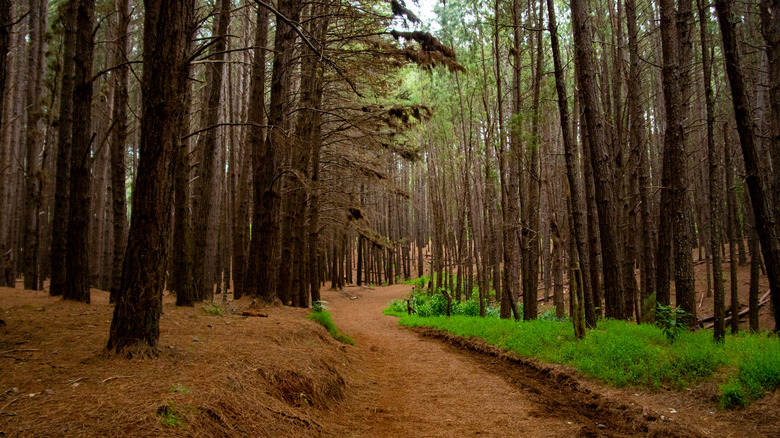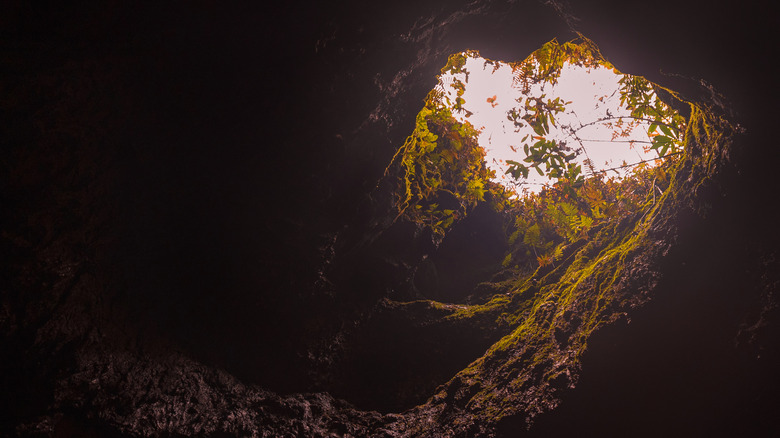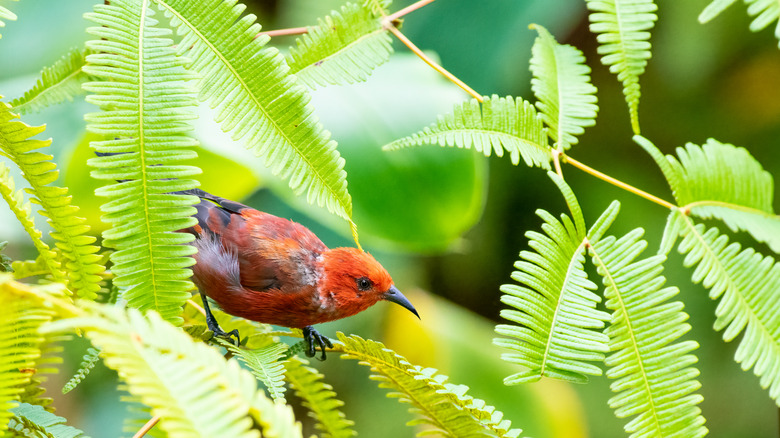Hawaii's Underrated Hiking Gem Is Perfect For Adventurers Seeking Lava Tubes And Birdwatching
Hawaii does not disappoint. From "Jurassic Park"-reminiscent hiking trails to forest bathing experiences, its lush green landscapes, towering trees, and tropical weather will immerse you in an otherworldly adventure. For those seeking a hike rich in local flora and fauna, Waihou Spring Trail would be a wise choice.
Located near Pukalani and the overlooked Makawao Forest Reserve on the island of Maui, the trail is part of Hawaii's Na Ala Hele Trail and Access Program which supports access for cultural and research purposes as well as public recreation. A year-round destination, the loop takes a little over an hour to complete, surrounded by chirping birds and a refreshing mountain breeze. The upper section is a family-friendly area leading to a viewpoint from which visitors can take a break and admire the North Shore of Maui and Central Valley, whereas the lower section is steep and best for more experienced hikers.
The route opening the path to the spring may be challenging due to its slippery ground, but it's worth the effort. Starting from the lookout point, you'll descend a steep, 600-foot path with switchbacks that lead to the Kailua Gulch watershed. Once you reach this basin, small cascades may run from the cliff walls — but the amount of water will depend on the season. The word "Waihou" actually translates to "new water" in Hawaiian and refers to this natural spring.
Hike along manmade lava tubes
Despite Waihou Spring Forest being a natural woodland, its lava tubes are actually manmade. Along the demanding route to the spring, hikers will encounter a web of small lava caves. These tubes are carved into the basalt cliffs of Kailua Gulch, creating a unique environment with its large, moss-covered stones in green emerald shades. Built at the beginning of the 20th century by the Haleakala Ranch, the tunnels were part of an irrigation system to help supply water for its livestock. Today, the water system and the cattle are gone, and the Maui Agricultural Company has rebuilt the forest.
Hawaiian mythology attributes the formation of these caves to a different force: the forest's little helpers, known as the Menehune. These folkloric little beings, known for their muscular build, are believed to have created some houses, temples, and tide pools known as "fish ponds." Legend says they live hidden in the lush tropical forests of the Hawaiian islands, living closely in communion with nature.
Woodland flora and birdwatching along the Waihou Spring Trail
Once a grazing land, the Waihou Spring Trail is now populated by different species of trees such as cypresses, eucalyptus, and endemic Hawaiian trees — offering both shelter and a sense of wonder. Towering trees like koa will have you walking with your nose skyward, as if gazing at natural skyscrapers.
Koa, also known as Acacia koa, is one of the kings of this forest. It's a large, fast-growing tree native to Hawaii that can reach heights of up to 115 feet. Once the wood of Hawaiian royalty, it's now regarded as one of the world's most prestigious hardwoods. Koa wood has always played an important role in Hawaiian culture — it was used in building weapons, carving canoes, and acoustic instruments like ukuleles. To this day, locals value its quality when building furniture, jewelry, and other accessories, all while preserving their ancestral roots.
The forest also presents great opportunities for seeing diverse Hawaiian wildlife. It's best to start early in the morning if you're looking for birds. Carry binoculars, and listen for bird sounds, which can help you spot them. Waihou Spring Forest is home to Hawaiian honeycreepers, a species under threat of extinction due to its vulnerability to malaria. Introduced mosquitos are threatening this and at least 14 other species of Hawaiian birds, says Chris Farmer, director for the American Bird Conservancy's Hawaii program, in an article published in The Nature Conservancy. With its canary-like chirping, bright red plumage, and black wings, this songbird was also considered a guardian spirit in indigenous Hawaiian culture, and its feathers were used for ornamental purposes by the Hawaiian ruling class.


